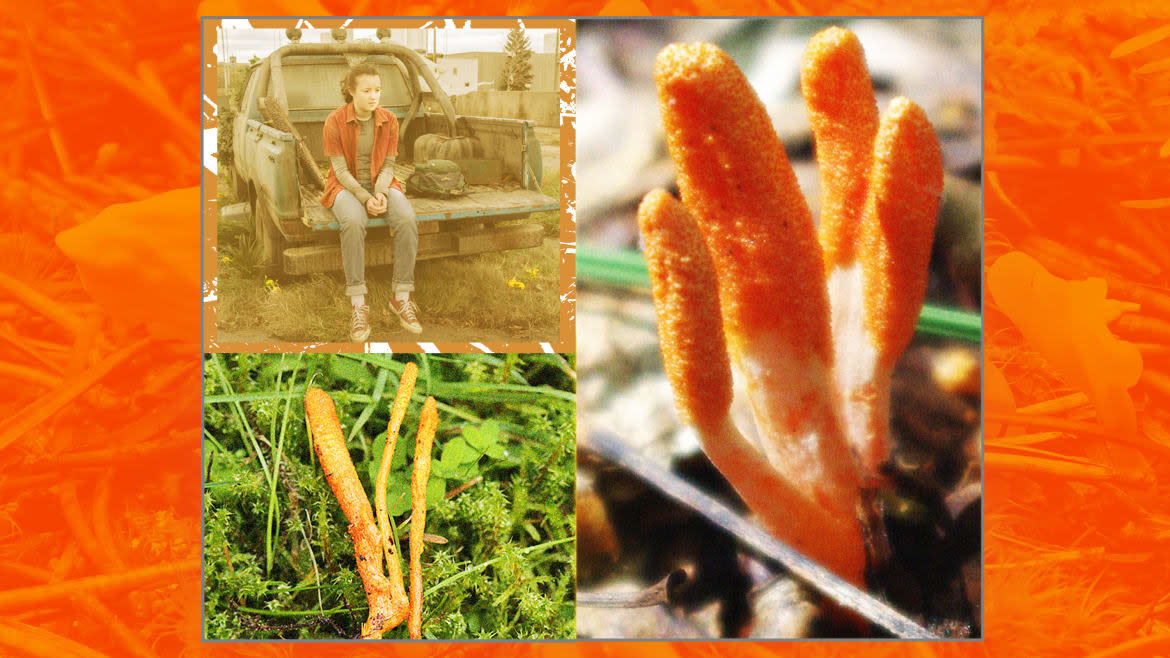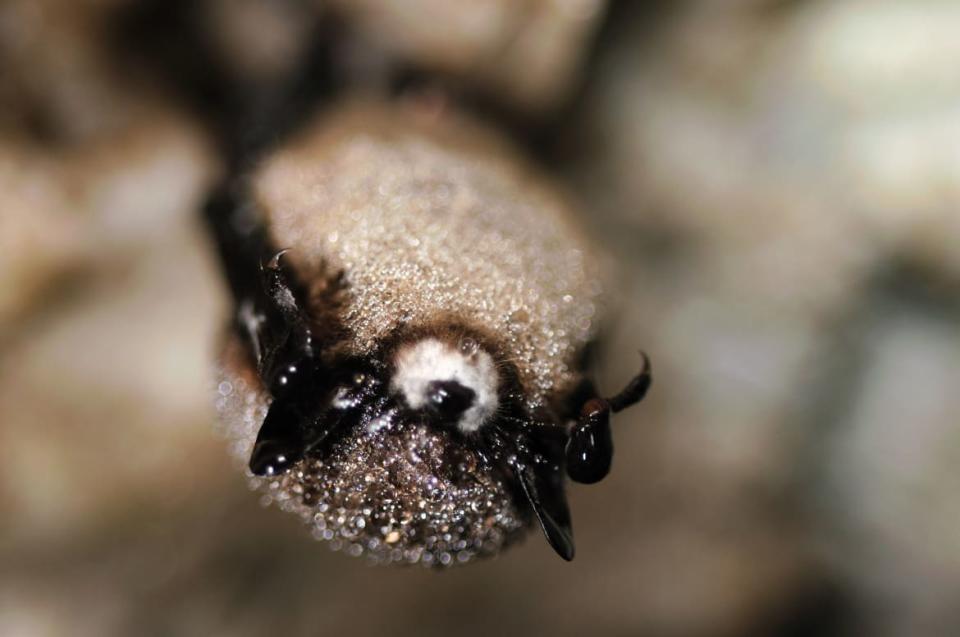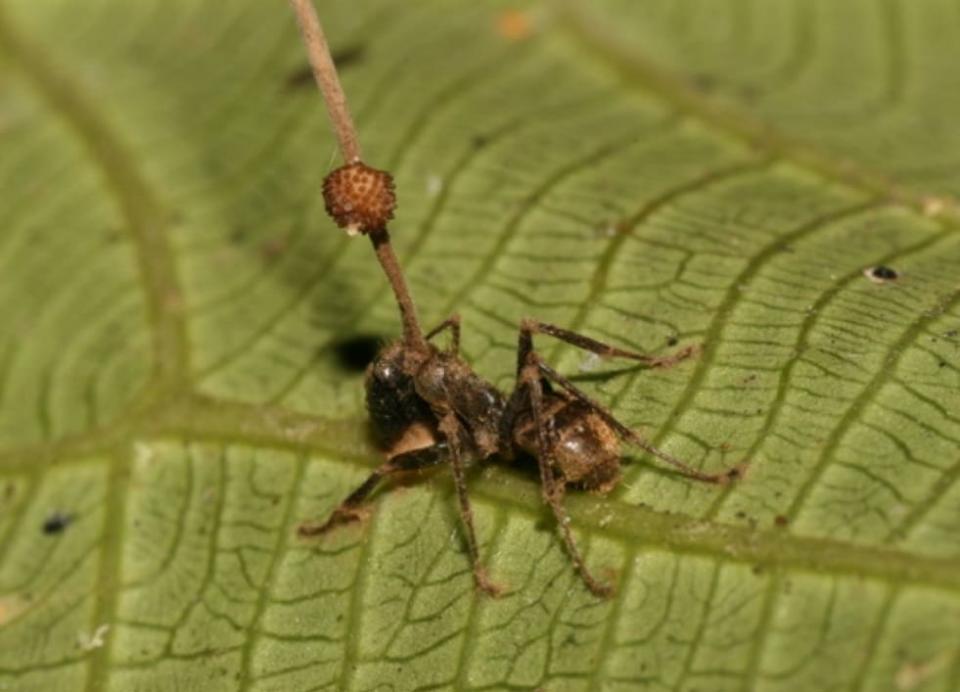‘The Last of Us’ Is Fiction—but Fungi Apocalypse Is Possible

There’s no shortage of excitement around the season finale of HBO’s The Last of Us, airing Sunday evening. The nine-episode television adaption of the popular video game follows the story of a middle-aged man and a 14-year-old girl trudging through a post-apocalyptic America ravaged by zombies who’ve been infected by a fungus that takes over host brains and causes them to become mindlessly aggressive. Most of humanity has been wiped out. Without any cures or effective treatments, the show paints a bleak picture of a fungal pandemic.
It is, of course, science fiction. Many zombie horror stories explain the rise of the undead or the transformation of still-living humans into hyper-aggressive violent beasts through as being the result of some kind of pathogen. The Last of Us is no exception—taking inspiration from the parasitic Ophiocordyceps unilateralis species of fungus that’s known to take control of ants’ brains. The species is related to the Cordyceps genus, from which the zombie fungus in The Last of Us derives.
Fear not. Death by zombie fungus isn’t something you should be worried about. But the show’s popularity has raised the question in the last few months: Could a pandemic caused by a fungus really help decimate the human species?

A bat afflicted with white-nose syndrome.
That isn’t such an outlandish question. More extreme weather events caused by climate change and globalization mean many more infectious fungal species are increasing their habitable range and attacking unprepared hosts (though they aren’t turning them into zombies). Fungi are also infecting more kinds of plants and crops, threatening the food supply; for example, fungal toxins from Fusarium are currently causing damage to more than 70 percent of wheat and cereal crops across the U.K. Globalization has also made it easier for fungi to hitch a ride across the world in search of new hosts. Pseudogymnoascus destructans, the cause of white-nose syndrome in bats, originated in Europe, where bats have evolved over hundreds of thousands of years to adapt to living with the fungus. But it’s now spreading rapidly through North America, where bats have no innate defense against the fungus and are now dying in their millions.
“Fungi are the major disease-causing source for plants,” Asiya Gusa, Duke University researcher who studies how fungal pathogens adapt to stress in their environment, told The Daily Beast. “They’re in more immediate danger due to the impact of climate change, potentially adapting the fungi to grow even better to wipe out plant crops, and that would threaten our food source supplies.”
Many species of fungi infect a broad range of plants and animals, making them extra dangerous. “Fungi have this capacity to actually exterminate their hosts, which a virus wouldn’t necessarily do,” Dee Carter, professor of microbiology and mycology at the University of Sydney, told The Daily Beast. “The fungus doesn’t care, because it’s got another host.” With climate change causing increased flooding, rainfall, storms, and other extreme weather events, plants and crops are more vulnerable than usual.

Ants biting the underside of leaves as a result of infection by O. unilateralis.
Carter explained that even though antifungal agents could protect these crops and plants, there are other negative downstream effects. Antifungal drugs aren’t specific and also kill the beneficial fungi that actually help the plants and other members of the ecosystems thrive. Other plants are vulnerable as well—fungal pathogens could reshape entire ecosystems and landscapes. In Australia, Myrtle rust (Austropuccinia psidii) is a growing problem that infects eucalyptus and other native plants. “If [Myrtle rust] gets out of control, it can really change the entire landscape and take out the big trees,” Carter said.
“Every so often,” she added, “a new crop pathogen comes up and everyone’s very worried, usually the scientists get on top of it.” Scientists can develop crops that are resistant to the pathogens, but this takes time and doesn’t stop the famine or food shortages in the meantime.
Alarmingly, attempts to win the fungal arms race have had an unexpected effect: The antifungals sprayed on plants and crops have actually helped species that infect humans evolve defenses to these drugs.
Clusters of ‘Black Fungus’ Infections Are Now Ravaging India’s COVID Survivors
Cryptococcus is the most common group of pathogenic fungi to infect humans. It can lead to lung damage and brain swelling. And to boot, Cryptococcus is already well adapted to evade the immune system. “They encounter things like amoeba that try to engulf them in nature,” said Carter. Amoeba are similar to mammalian immune cells called macrophages which also work by engulfing pathogens, so the fungi have already learned how to evade them. Adding in antifungal resistance to the equation makes this pathogen even more dangerous.
While Cryptococcus normally infects immunocompromised individuals, more healthy people are starting to get these infections too. Cryptococcus gattii leads to symptoms like cough, chest pain, headaches, nausea, vomiting, light sensitivity, and confusion. But there’s also a high mortality rate ranging from 13 to 33 percent. Treating the infection requires at least six months of intravenous and oral antifungal treatments as well as the surgery to remove the fungus from the lungs, brain and spinal cord.
Until fairly recently, Cryptococcus gattii was considered mainly a tropical pathogen. But after an outbreak in Vancouver Island in 1999, it has cropped up in Washington State and Oregon. By 2012, the U.S. Centers for Disease Control and Prevention had reported 96 cases in total. British Columbia in Canada reported almost 400 cases by 2015.
Estimating how many people were infected during this outbreak has been a challenge since many may be asymptomatic. According to Gusa, the shocking part of this outbreak was that it affected many otherwise healthy individuals. Now the disease infects a number of individuals in the Pacific Northwest every year.
Even if the infectious behavior of a pathogenic fungus is well known, eradicating it will still be difficult. After an initial infection is cleared, fungi can form protective spores that persist in the lungs and wait for the opportunity to cause another infection. According to Gusa, they can continue adapting and evolving while they’re “hibernating” in their spore form, making it easier to develop resistance to antifungals.
There is a limited repertoire of antifungal agents, making the development of antifungal resistance even more of a threat. The problem is that any antifungal drug is also anti-human. “If you look on the tree of life, you’ll see that fungi and animals group very closely far away from plants, bacteria, and everything else,” Carter said. “So that means they have a metabolism that’s similar to ours, which makes it hard to come up with good new antifungals.”
How Climate Change Could Lead to a New Pandemic
Drugs that affect fungal metabolism would also cause side effects in humans, meaning that the strongest antifungal agent would also be most toxic to humans. While researchers have been working on developing vaccines to certain fungal pathogens as another option to reduce infection, these efforts so far have not yet yielded success.
And this might be a more opportune time for a fungal pandemic than ever, given the growing evidence that COVID-19 infections could weaken people’s immune responses and make them more susceptible to other diseases.
One example is Aspergillus. You’re already familiar with this fungus—it’s everywhere, making it impossible to not breathe in the spores. It isn’t harmful to a healthy individual but in the absence of a robust immune response, Aspergillus infects the lungs and sinuses causing fever, chest pain, and coughing. In severe cases it could even spread to other parts of the body and require surgical removal. Another example of an unavoidable fungus is mucormycosis, found in the soil and in decaying vegetation. Spores can enter through the lungs, sinuses, or open cuts causing infection in immunocompromised individuals. Like Aspergillus, it can also spread throughout the body. Treatment requires intravenous infusion of antifungal drugs as well as surgery to remove infected tissue.
COVID Truthers Have Found a New ‘Pandemic’ to Freak Out About
COVID-19 has been a boon for these pathogens.
“Aspergillus infections and mucormycosis infections have been associated with COVID-19 morbidity,” Gusa said. About 15 percent of people who are hospitalized in an intensive care unit with COVID-19 develop Aspergillus infections, worsening patient outcomes. While mucormycosis infection is relatively rare, the cases are underdiagnosed because they tend to infect people in low and middle-income countries which lack access to testing. This fungal infection greatly increases mortality, especially when the fungal infection spreads to the brain.
In sub-Saharan Africa, where the prevalence of HIV/AIDs is higher, Cryptococcus is more of a problem. “They just don’t have the resources or the supplies to treat people effectively,” Gusa said. “So that’s why we see a lot of high mortality associated with Cryptococcus infections.” If another fungal pathogen emerges and attacks food supplies, these countries would also bear the brunt of the burden.
Around the world, fungi remain a problem in part because the field is underfunded. Less than 1.5 percent of global funding for infectious diseases goes toward studying fungal pathogens, even though they account for 1.5 million deaths worldwide each year. “If you compare all the other types of pathogens, even though fungal diseases kill more folks than tuberculosis, they have far more funding,” Gusa said. “We don’t have good surveillance and diagnostic tools so it makes tracking the spread, incidence, and who’s being infected harder.” Patients may receive antibiotics and other inappropriate treatments as a result.
Putting fungi on the radar as well as providing diagnostics for clinicians could reduce mortality. But there’s also a lot we don’t know about fungi because of a lack of surveillance. “What is the real threat? What is the real spread? That’s where we need more research,” Gusa said.
More sustainable agricultural practices, like moving away from plain monocultures could help build up resistance against the fungi. Monoculture refers to the practice of growing a single species or strain of crop in one field. Soybeans, wheat, rice and corn account for 50 percent of all agricultural fields worldwide. This not only degrades and depletes the soil of nutrients, but the lack of genetic diversity within these monocultures puts these crops at a higher risk of being wiped out by pests, pathogens, or changes in climate. Regenerative agricultural practices that involve planting multiple different crops with a field, using less fertilizers, and reducing how often the soil is damaged or disturbed could reduce the ability of pathogenic fungi to thrive.
The threat of a deadly fungi turning people into zombies like in The Last of Us isn’t on anyone’s radar, but the threat of pathogens decimating the food supply may keep scientists awake at night.
Get the Daily Beast's biggest scoops and scandals delivered right to your inbox. Sign up now.
Stay informed and gain unlimited access to the Daily Beast's unmatched reporting. Subscribe now.


